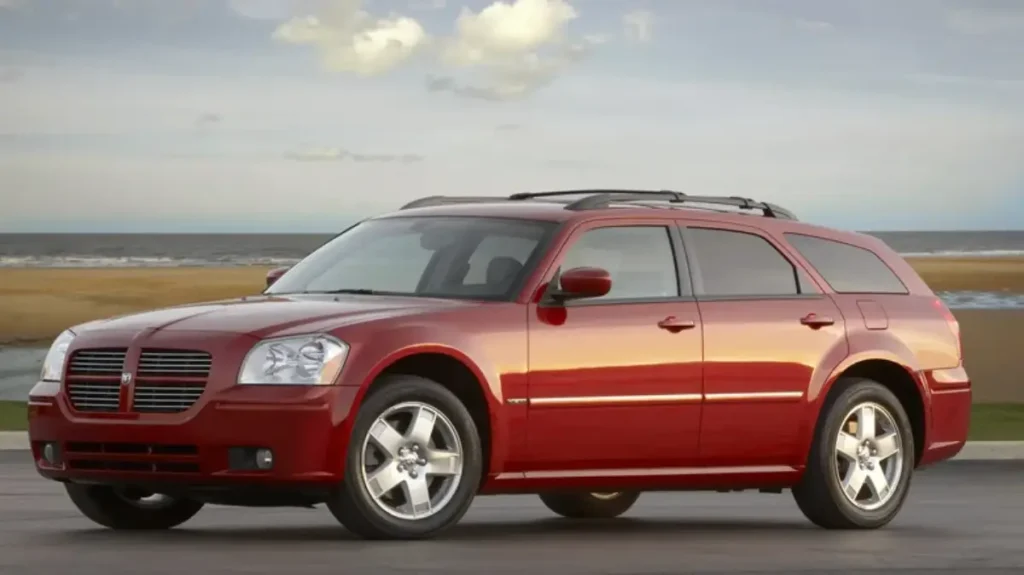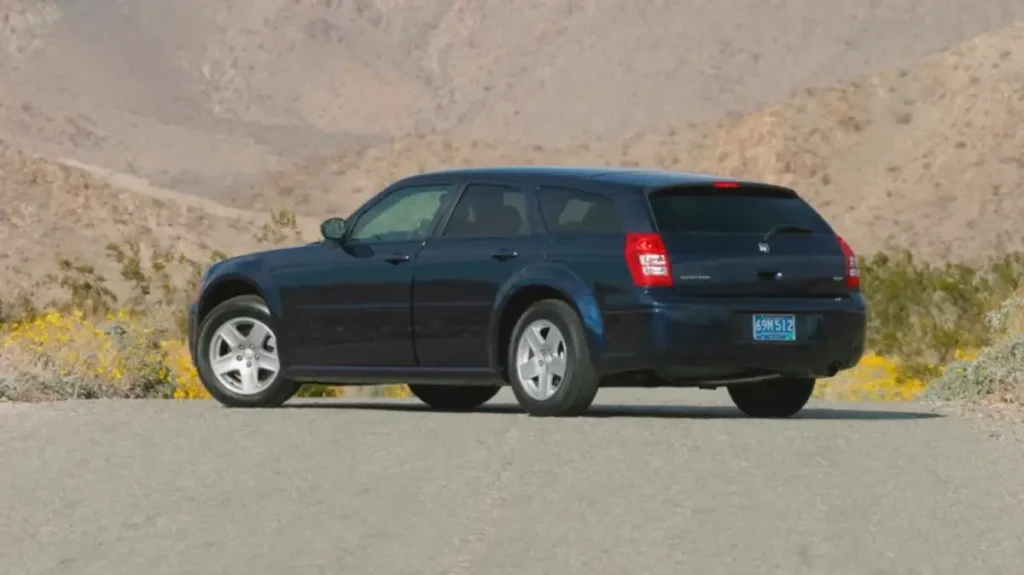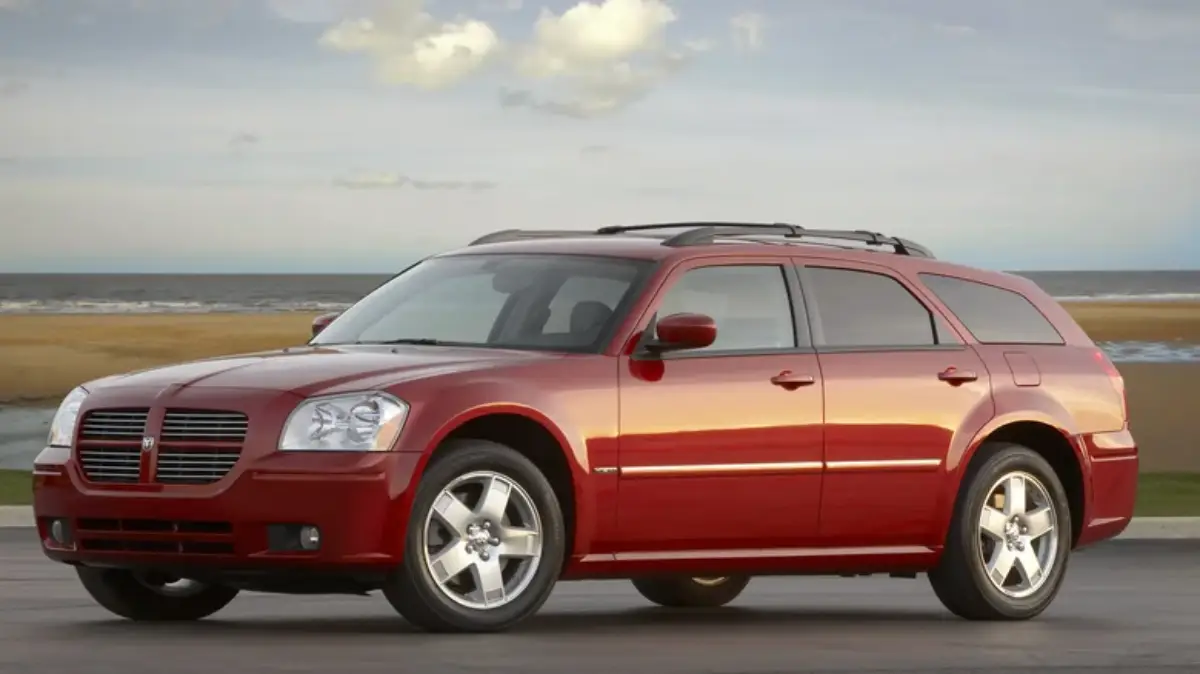
Dodge Discontinued: The Dodge Discontinued Magnum is sometimes seen by auto historians as the less successful younger sibling of the far more popular Dodge Discontinued Charger. Since its inception, this specific car line has faced difficulties; the first example of its kind was a failed 70s Dodge Magnum, which many people probably needed to be made aware of. Until the late 1980s, the Magnum brand persisted in various versions in nations like Brazil and Mexico, despite its initial relative lack of appeal. It was revived in the mid-to-late 2000s, almost miraculously.
The 2005 Dodge Magnum was unlike the other models, which had fallen short of becoming the icon Dodge had hoped for. The new Magnum was positioned as a full-size station wagon with lots of power thanks to its V-6 and V-8 engine options, eschewing its predecessors’ mid-size 2-door coupe design. The new version of the vehicle was well regarded; in fact, the automobile and Driver chose it from a long field of contenders for their selection of the top ten automobile models of 2005. The Magnum remained a staple of Dodge Discontinued range for several years until its sudden discontinuation in 2008.
Some customers could still be confused as to why the Magnum’s brief return was due to its redesign, even though it has a lot of potential. While Dodge Discontinued decision was undoubtedly influenced by the model’s potential for profit, other significant changes in the industry at large at the same time also played a significant role in the model’s demise.
The Dodge Magnum was a wagon in an SUV world

It might be argued that, despite Dodge’s wise decision to entirely reimagine the Dodge Discontinued Magnum for its 2005 rebirth, the final shape this pivot took prevented the Magnum from ever realizing its full potential. To put it briefly, station wagons were losing favor at the time the Magnum debuted, and it was a luxury model.
In the 1990s, station wagons had a sharp fall in popularity, particularly in the United States. Once regarded as the classic family car design, it was now finding it difficult to compete with the growing popularity of contemporary SUVs and crossovers. These cars were more streamlined, had a higher driver’s seat, and had comparable interior space because of design innovations. With time, it became evident that the rise of the SUV in particular wasn’t merely a fad; in the perspective of many Americans, the once-loved wagon was becoming entirely obsolete.
A large portion of the harm had already been done by 2005. SUVs had shown they were here to stay, and wagons were fighting for a less and smaller share of the market. With its elegantly curved appearance and focus on power and versatility, the Magnum’s resuscitation was in some ways one of the last attempts to revitalize the wagon segment. Dodge Discontinued even made an effort to market the vehicle as a “sports tourer” as opposed to a wagon. Though a dependable vehicle, the Magnum was not able to keep up with the quick changes in the market.
Chrysler Group faced a struggling market in 2006

The 2000s vehicle market was changing to reflect the direction the industry was taking, as seen by the rise of SUVs and crossovers to surpass station wagons. But in other respects, the market was regressing. For American automakers, 2006 was a challenging year due to rising petrol prices, deteriorating economic conditions, and fierce rivalry from international manufacturers.
The parent business of Dodge Discontinued, Chrysler Corporation, was particularly heavily impacted by the crisis. According to a WardsAuto study, Chrysler managed to recover from a $1.4 billion loss in 2006. Only 8,868,372 cars, or approximately 54% of the total market share, were delivered by the three major manufacturers that year, including Ford and General Motors, all of which reported overall losses. It has been well over ten years since the sector had faced a conflict of this magnitude.
Due to the challenging market, Chrysler and Dodge were forced to make adjustments. There was little activity in the business. There was minimal space for excessive spending or producing non-essential goods. “We have to move now to adjust the way our company looks and acts to reflect a smaller market,” Vice Chairman and President of Chrysler Tom LaSorda stated in the press release announcing the Ford Magnum’s discontinuance. “That means a cost base that is right-sized and an appropriate level of plant utilization.”
The Magnum wasn’t meeting Dodge’s standards

Sadly, the restored Dodge Discontinued Magnum faced significant challenges from the outset due to the preference for SUVs and crossovers over station wagons as well as the deteriorating status of the auto industry. As a result, sales were decent but not exceptional. Even though it was well received when it was first released, it didn’t seem to be up to Chrysler’s commercial standards. The writing was somewhat on the wall even before the news of its termination.
The Magnum’s end was announced by the firm in a 2007 news release, citing several issues such as low sales of the model, dealer pressure to abandon it, and the contracting auto industry. Jim Press, Vice Chairman and President of Chrysler said in the press release, “These actions reflect our new customer-driven philosophy and allow us to focus our resources on new, more profitable and appealing products.” “Further, these product actions are all in response to dealer requests.”
It wasn’t just the Magnum model that was being eliminated. The Chrysler Pacifica, Chrysler Crossfire, and convertible Chrysler PT Cruiser were all eliminated in addition to the awful station wagon. Some have since made a comeback, such as the Pacifica, while the Magnum is still inactive.
“Dodge Discontinued review on YouTube“
Also Read: 2024 Ford Ranger Raptor Reviews: Assault School Sets the Bar for Off-Road Training
Share to Others
